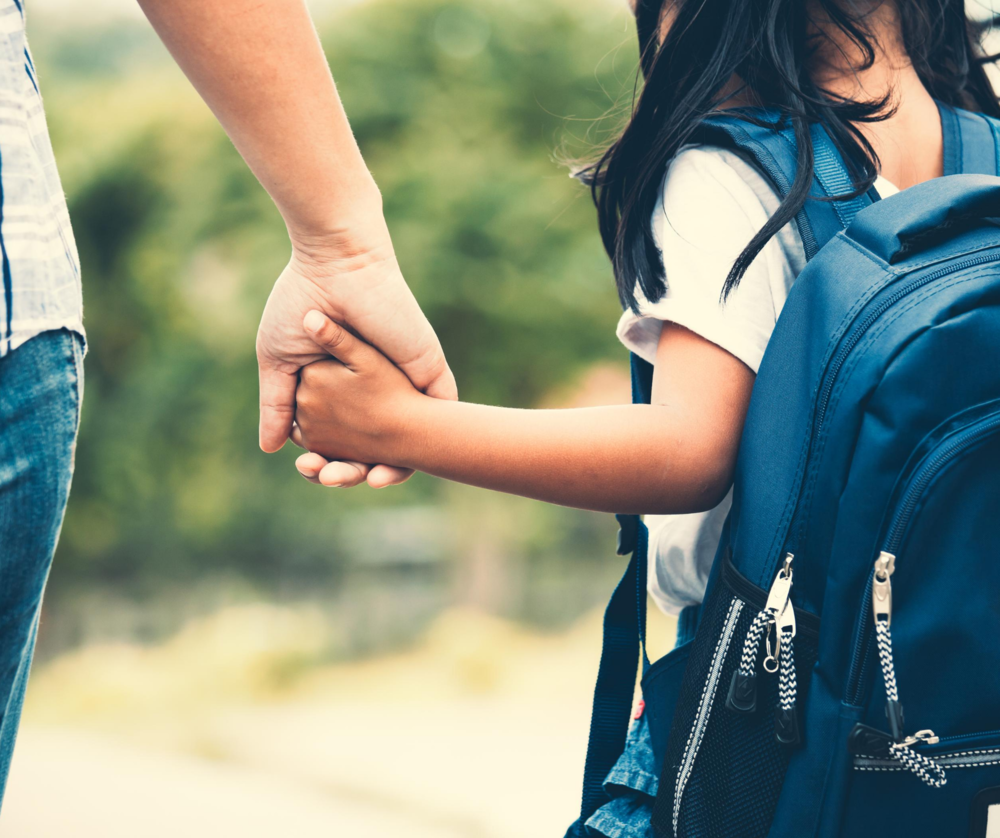
Well, given the response to last week’s post, it appears to have met a need that we all have – guidance. My hope (and that of my guest contributor, Dr. Kristin Valerius) was to offer guidance and perspective in a way that allowed all of you to focus on comprehensive information without as much fear. Don’t get me wrong, I’m overwhelmed with these decisions too. Often, fear overrides my rationality and I just want to keep my kids at home and pretend none of this is happening. But I cannot. And neither can you.
To that end, we have created a tool to help you quantify these difficult decisions. I won’t belabor its content. Take the quiz yourself and find out! Dr. Kristin spent countless hours creating a tool that might guide you to your next best step. Please know that we recognize no decision is perfect. No decision is the “right” decision. We simply want parents to have access to tools and make informed decisions.
Know this: There is no shame in whatever decision you make for you and your family. Every decision (other than the stay-at-home 100% and go crazy, if you’re like me!) is difficult and involves some level of risk. You don’t have to justify your decision to other moms, teachers, friends on the internet – no one. We all make the best decisions we can at the time, with the information we have access to, at that time.
COVID Decision-Making Tool
Click below to download a questionnaire to help guide your decision about returning to school this fall. When creating this tool, we started with available adult supervision knowing that supervision for children is critical and was not available to all parents this spring. As well, engaging in homeschooling requires adult support and scaffolding, not simply supervision. Second, we considered underlying health conditions and overall adjustment to distance learning this past spring.
When answering questions about adjustment and next steps, don’t think about your worst or best days. In general, ask yourself, how did things go this spring? Were you able to meet the academic needs of your child, manage sibling relationships and have little conflict with your child? And, did your child fare well? Did he/she meet academic expectations, feel manageable and adjust well emotionally and behaviorally?
Results
Recommendations for next steps fall into several categories based on your answers. If you had multiple columns with high scores, that indicates several competing challenges. We recommend you reach out to school professionals, your pediatrician and/or a mental health provider. In general, we want to encourage you to use the systems available to you – it’s what they are there for, including resources at your child’s school. We recommend having 2-3 meetings with professionals if your column D scores are heavily weighed.
Socialization, regardless of choice, is critical. Reach out to other parents – we’re all facing enormous stress right now. Create some circles of support for you and your children so that you can all have socialization opportunities. For some parents, this may take a bit of preparation now. Many of the children we work with have found building strong friendships outside of school challenging. Maybe your child had good friends in school, but you haven’t really connected with those parents outside of school. It can feel a bit intimidating at times to try and make that connection with someone you don’t know well. But our world is so different now, and the truth is we are all hungry for connection. When we were busy with sports, jobs, and so many other events certain playdates may have been hard to fit in. But one of the silver-linings from COVID (please let there be some!) is that a simplified schedule leaves more opportunity and desire to meet up outdoors at the park and try and build that out-of-school connection. So take the chance to reach out to that family that you just don’t know well and build a bridge!
In addition, families may want to explore social-emotional learning resources. Small social groupings might be best for kids that struggle socially while older kids might consider alternate activities such as volunteering, a first job, joining a youth group, or seeking out a mentoring role—there will be many younger kids who just might do much better on a class assignment sitting next to a “cool big older kid” than they will with their parents. Given concerns about transmission, we recognize less social engagement might be necessary; but be aware of complete isolation. It’s simply not healthy for you or your children.
Finally, we’d love to hear from you. If you’re willing to submit your results, we want to compile them for decision-makers on local and state levels. To submit your results save the excel spreadsheet once you’ve entered all your answers. Attach it to an email and send it to ksvalerius@sundstromclinic.com. If you want to send your results encrypted simply start with an email to the above with “secure email” in the subject line. Dr. Kristin will respond to your email with a encrypted email. In your reply you can then attach your email and it will be all secured!!
We hope this assessment tool helps to guide informed decisions. I want to reiterate, no decision is the right decision – only the one that’s right for you. We are all doing the best we can during precarious times.
Let’s keep learning together!
Dr. Amy & Dr. Kristin
PS – thank goodness for friends! Dr. Kristin’s brain works so much differently than mine – while our philosophy and messaging is the same, her ability to use excel is STEALTH! Huge thanks to her!